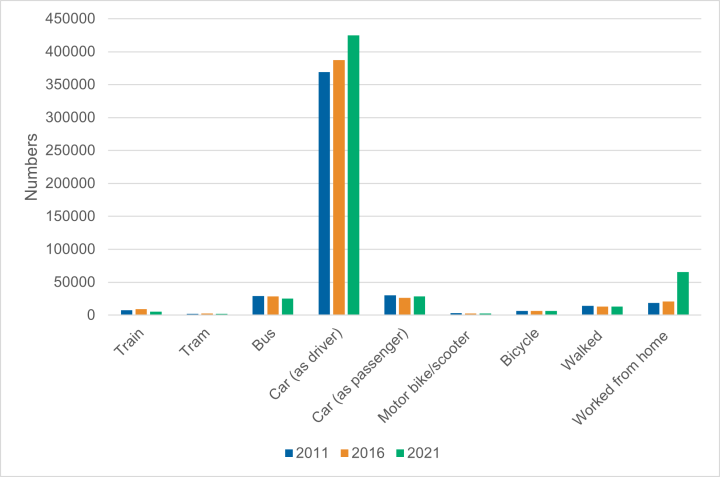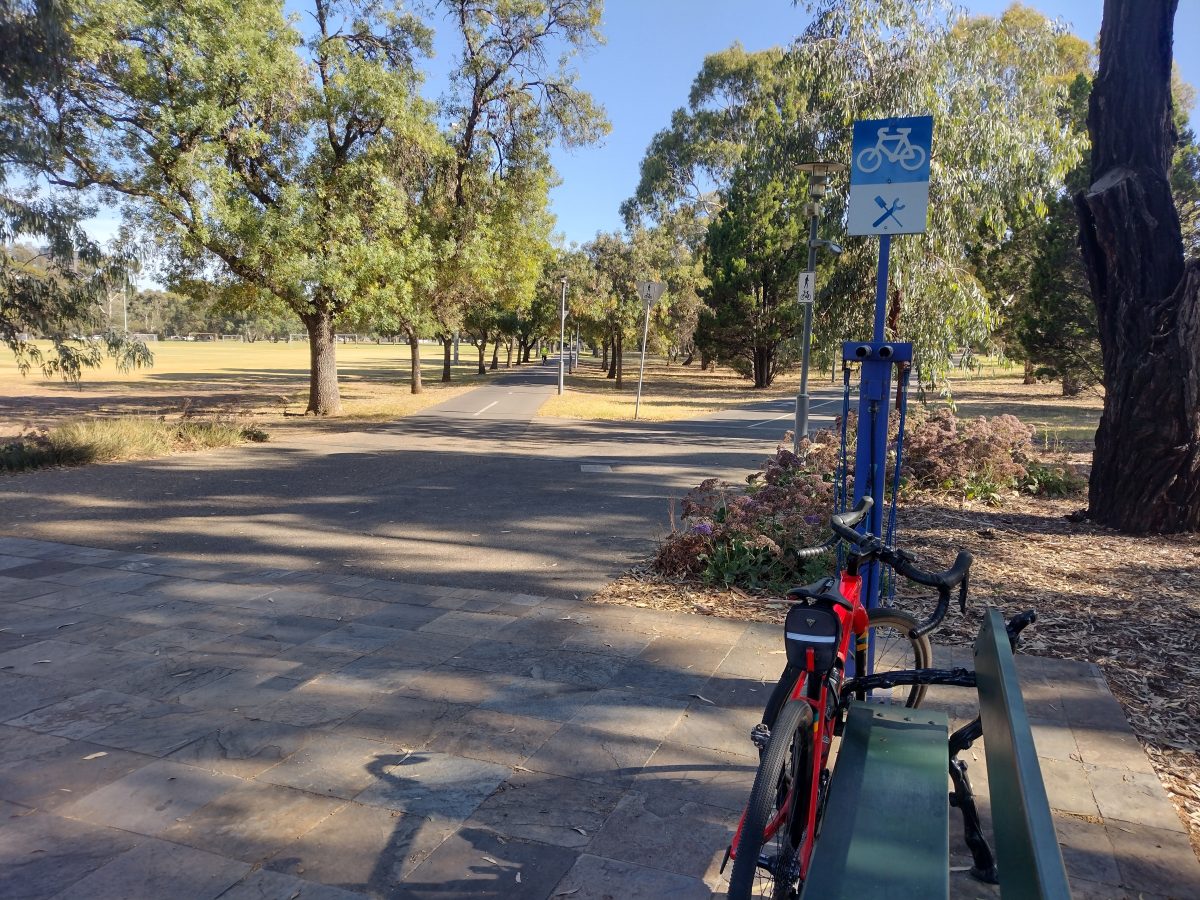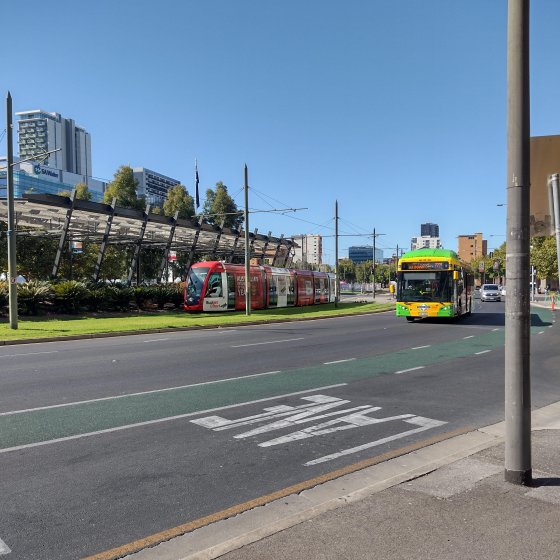- Home
- Environmental Themes
- Liveability
- Transport
Transport
How do we get around
South Australia is very car dependant for travel, with approximately 85% of people using cars as their primary mode of commuting. South Australians are particularly reliant on cars in regional areas and urban fringes where other forms of transport are limited. The number of registered cars has increased by 4.5% over the past 5 years with the number of electric vehicle sales doubling between 2022 and 2023.

Use of public transport has significantly decreased nationally. However, this may be the result of the 2021 census being undertaken during COVID-19 with people predominantly working from home. Public transport only represents 8.3% of daily trips.
The Australian Government has developed the National Electric Vehicle Strategy, which aims to increase the uptake of electric vehicles (EVs) by:
- increasing the supply, affordability and accessibility of EVs
- providing resources, systems and infrastructure to enable the rapid uptake of EVs
- increasing demand for EVs.
The South Australian Government is partnering with the RAA in expanding the statewide charging network to include 530 chargers across 140 electric vehicle charging stations in over 50 rural, regional and metropolitan service locations. The availability of charging stations needs to expand with the increasing purchase of electric vehicles.
A 30-Year Plan for Greater Adelaide target was to increase the share of work trips that use active or public transport for inner, middle and outer Adelaide by 30% by 2045. The 2020–21 update report indicates that we are off-track and that this target requires review and a change in travel behaviour, development patterns and infrastructure planning.
In 2022, a select committee of the Legislative Council was established to report on Public and Active Transport in South Australia in response to concerns about the decline of public transport services in metropolitan Adelaide and lack of accessible public transport in regional areas and developments located on the city fringe. The committee has made 13 recommendations to facilitate and improve public and active transport.
A Benchmarking Adelaide Report undertaken in 2023 has indicated that Adelaide lags behind similar cities when it comes to providing efficient public transport services and cycling infrastructure. It also stated that while public transport was accessible to much of the community, the transport itself is not efficient and, therefore, leads to longer commute times.
What Influences Our Choices
Pressures
- Reliance on the use of petrol vehicles for transport due to the limitations of other transport options.
- Availability and expense of purchasing EV cars, accessibility of charging stations, driving distance capability of EV cars and replacement of batteries may discourage the purchase of these vehicles.
- Safety associated with cycling and availability of end-of-trip change room facilities.
- Lack of infrastructure (eg dedicated bike tracks) to support active transport in metro, inner, middle and outer Adelaide.
- Limits to the efficiency of public transport with respect to commute times, availability and accessibility.
Impacts
- 85% of South Australians drive cars to commute, increasing congestion on roads and emissions.
- Pollution from petrol powered vehicles is contributing to climate change.
- Uptake of EVs is occurring at a slower rate than optimal.
- Less people cycling, walking and using public transport, therefore resulting in more people using cars to commute.
Responses
- Sales of EVs vehicles are increasing, which means that use of EVs are increasing in popularity:
- Introduction of an electric vehicle subsidy, which includes registration exemptions for electric vehicles that meet certain requirements.
- Implementation of a statewide EV charging network – The range, cost, capacity, infrastructure and availability are all improving to support the purchase of electric vehicles.
- Research is being undertaken into alternative fuel sources that are more environmentally sustainable.
- Implementation of projects to improve public transport patronage so that it can take a greater share of demand as Adelaide grows.
- South Australia has a range of cycling maps and a cycle planner to facilitate planning journeys.
- A Report of the Select Committee on Public and Active Transport includes recommendations to increase the participation of cycling, including developing strategies to improve the safety of cycling. A Cycling Strategy for South Australia 2022–2032 has been developed to help facilitate greater uptake of cycling. A survey undertaken by Bike Adelaide has indicated that routes that provided separation from traffic or slower traffic were more popular with riders.
- The South Australian Walking Strategy 2022–32 has also been developed to encourage a greater uptake of walking by planning walkable neighbourhoods, towns and cities, building connected, safe and pleasant walking environments for all and creating a walking culture in South Australia.
- Bikespot has been launched by the Australian Government to further understand the perceived locations of safe and unsafe cycling routes to help prioritise future cycling infrastructure improvements. A national report will be released in 2024.
Opportunities
- Ensure that appropriate and accessible battery recycling facilities are available in South Australia.
- Implement initiatives in the Cycling Strategy for South Australia and recommendations highlighted in the report of the select committee. Identify the barriers to people riding bikes.
- A more strategic approach that looks to build a safe and accessible active transport network to encourage greater participation in cycling and walking.
- Expand cycling maps for other areas.
- Ensure that new building plans incorporate end-of-trip facilities for active transport.
- Encourage, facilitate and potentially provide incentives to use other forms of transport instead of cars.
- New developments to consider public and active transport options for commuters.

Check out:
Further Reading
- We Ride Australia – The Australian Cycling and E-Scooter Economy in 2022 – Provides information on the benefits of cycling and e-scooters on our wellbeing, health and the environment.
- Report of the Select Committee on Public and Active Transport – recommendations to increase the use of public transport and participation in active transport.
- Cycling Strategy for South Australia 2022–32 – a report to help facilitate greater uptake of cycling.
- South Australian Walking Strategy 2022–32 – encourages a greater uptake of walking by planning walkable neighbourhoods, towns and cities.
- Waiting for the Green Light: Transport Solutions to Climate Change – a report by the Climate Council which highlights contribution of transport emissions to greenhouse gas emissions and climate change.
- National Electric Vehicle Strategy – aims to increase the uptake of electric vehicles (EVs).
- Benchmarking Adelaide Report – compares several key aspects, including transport, with 19 international cities.
